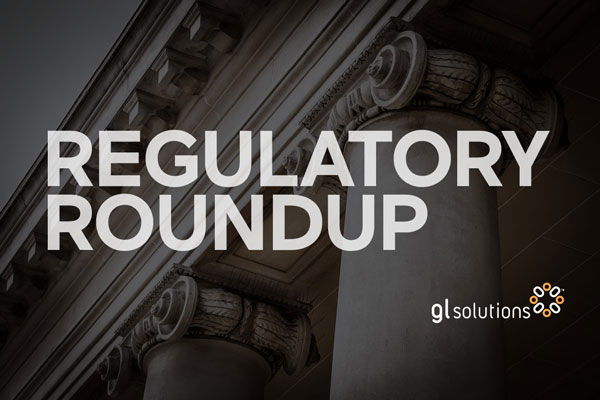A model agency harnesses their experience and talents to continuously improve. Their system gathers data, provides insights and measures performance improvements—automatically. A model agency reviews reports of these measures on a regular basis to help their agency improve.
A model regulatory agency uses a regulatory software solution that features automation, efficiency and continuous improvement to transform their agency.
First Clue: Automation
Why automation? Software automation helps licensing specialists, inspectors and others reduce their work. Automation performs the work or moves that work elsewhere.
For example, online self-service websites that allow applicants and licensees to enter information themselves offer the most significant labor-saving improvement for your agency.
The Alabama Home Builders Licensure Board transformed their agency with automation. Switching from an old database and spreadsheets to software automation enabled the agency to eliminate redundant data entry. The change helped staff work more efficiently when they no longer needed to enter information multiple times in multiple locations, as in the past. Software automation also reduced opportunities for errors; by reducing redundant data entry, they reduced opportunities for mistakes.
Second Clue: Efficiency
Almost everything a regulatory software solution does is designed to increase efficiency. And efficiency helps your staff perform work quickly.
For example, staff dashboards show staff all required work along with due dates. These dashboards help staff prioritize work and finish on schedule.
The Nevada State Fire Marshal ditched manual processes for software automation to achieve efficient, digital processes. The agency left their paper on the shelf and moved the license, certification and renewal processes online. Now, staff efficiently print cards from the regulatory software solution; these include cards that fit in their wallet, like a driver’s license—a popular item among their licensees. In addition to these wallet cards for individuals, they also use the system to print licenses for businesses.
Third Clue: Continuous Improvement
A licensing system boosts your department’s efficiency for processing applications, renewals and inspections; and the system tracks continuing education credits and manages similar work. A well-designed system also provides feedback that highlights opportunities to increase efficiency further.
For example, comprehensive reports provide snapshots of your agency at work. Some, like key performance indicators, measure staff and software efficiency.
Arizona Barbering and Cosmetology Board’s Executive Director Frank Migali shares how he makes continuous improvements at his agency. And he explains how he measures the success of those improvements and changes. “Data, data, data. I cannot reiterate that enough. Data is the sole item for me that validates that our change is successful.”
Model Agency Checklist:
As you learn how to spot a model agency, look for these easy giveaways:
- Measures and tracks goal attainment
- Innovates and improves continuously
- Identifies performance gaps in people, processes and systems
- Creates a culture of innovation and quality
- Embraces change
- Understands how all aspects of the agency run
- Stays on top of upcoming legislative changes and incorporates necessary changes
- Reduces costs and labor over long durations
Path to a Model Agency
You know how to spot a model agency, looking for the three clues—automation, efficiency and continuous improvement. Now, you need a step-by-step guide to implementing change in your agency:
Your path to a model agency takes you through five phases of agency transformation:
Step 1: Build Capacity
In step 1, your agency defines clear objectives for your agency transformation—along with dates to meet those goals.
You understand the issues your regulatory agency faces, including regulatory compliance, management process and performance weaknesses.
How step 1 looks at your agency: Advancing technology and cybersecurity needs put your agency on the path to modernization. Your agency’s reputation and efficiency, along with the public’s needs and demands, depend on this.
Step 2: Standardize Processes
In step 2, you define your agency’s business processes. Before step 2, your agency struggles with poorly defined processes; your employees complete tasks in different ways.
During process standardization, you define the right way to complete the work—and the right management solutions to use for that work. You create business process guides for your agency staff to follow in a step-by-step fashion. Your staff use vetted processes that follow best practices and meet regulatory compliance needs.
How step 2 looks at your agency: Your agency reviews the current systems and processes at your agency, determining how to bring them up to date and unifying them on a single set of processes.
Step 3: Serve Customers
In step 3, your agency brings your public-facing permitting and licensing services online with regulatory software solutions. Your customers expect the ability to interact online, so you transition to modern, public-facing websites and portals.
You reduce your agency’s paper reliance and manual processes. With a constituent or licensee self-service online portal, your agency automatically feeds permitting and licensing data directly into regulatory software and systems to create electronic records.
How step 3 looks at your agency: Your regulatory agency employs customer-centric online capabilities, including online renewals, verification sites and a licensure verification portal.
Step 4: Integrate Services
In step 4, your agency integrates the digital tools and portals you created in step 3; those systems enmesh, creating an integrated digital compliance management system. Communications, project and task management, documentation and more all exist in a single integrated digital platform.
Your agency increases customer ease of use and transforms your field agents’ capabilities and response times with responsive and mobile friendly tools.
How step 4 looks at your agency: Your agency integrates your new standardized processes and customer-focused digital tools—and makes them mobile friendly, as well.
Step 5: Improve Continuously
In step 5, your agency harnesses your experience and talents to continuously improve. Your regulatory software solution gathers data, provides insights and measures performance improvements—automatically. Your agency reviews reports of these measures on a regular basis to fuel agency improvements. You serve as a model agency now—an agency that others reference as they tackle their own agency transformation efforts.
In step 5, your agency adds tools that measure performance, identify and resolve process exceptions, and demonstrate value to stakeholders.
How step 5 looks at your agency: Your agency implements an analytics layer to your integrated and digital workflow, gaining real-time insights that power continuous improvement in permitting and licensing processes.
Agency Transformation Service
Our Agency Transformation Service takes your agency through the modernization process, one step at a time. GL Suite’s Agency Transformation service moves beyond scattered improvements, instead implementing a truly strategic model of digital transformation. We take a consultative approach, working alongside your agency to perform a deep analysis of your permitting and licensing systems and processes. Then we craft a detailed plan following the five phases of Agency Transformation. Contact us to learn more.
Time to Modernize
GL Solutions helps your regulatory agency run, grow and adapt through modern software and automation that helps solve your agency’s greatest challenges. To learn more, contact us.
To receive the latest regulatory news delivered to your inbox each week, subscribe to our newsletter.


